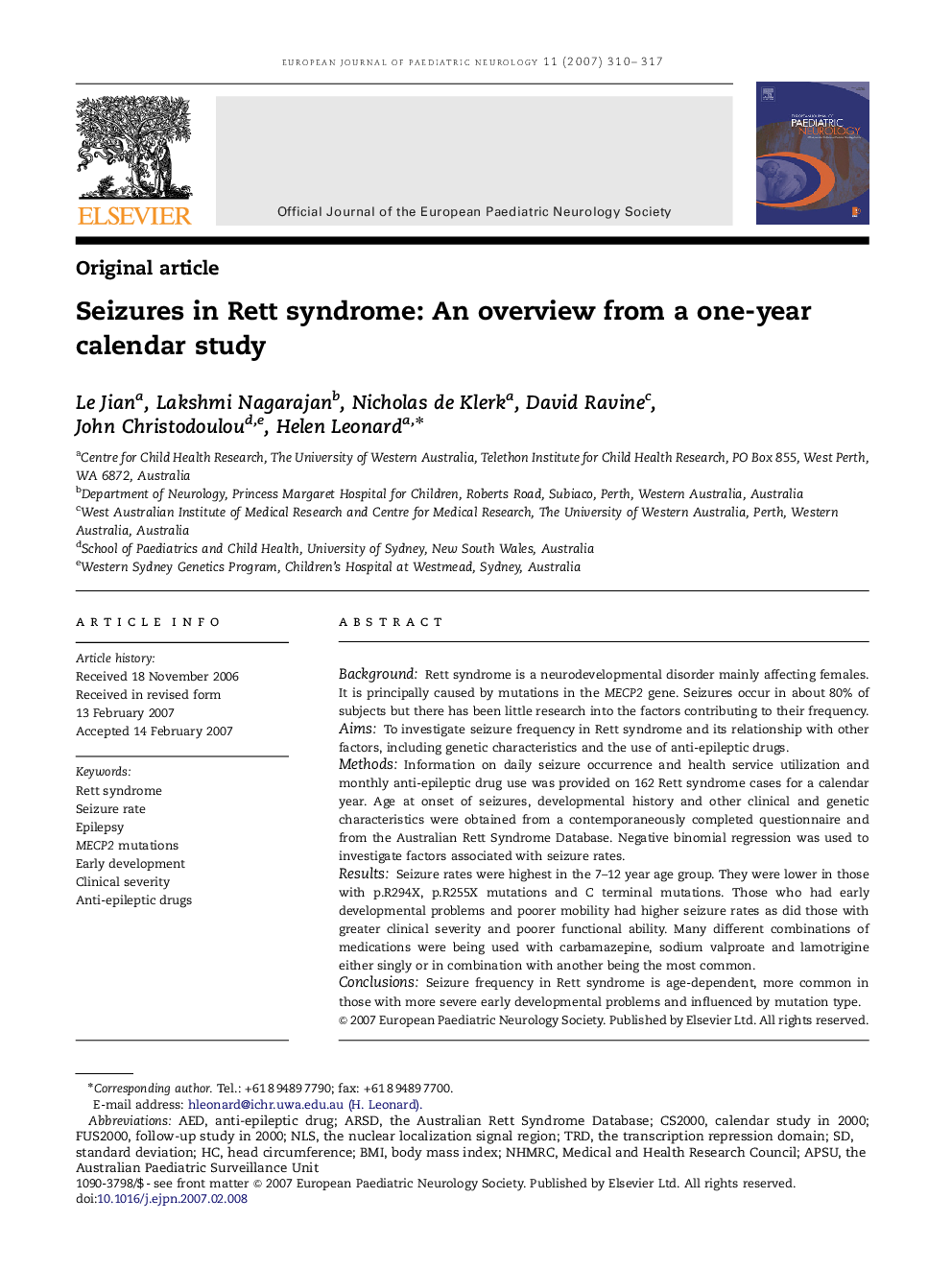| Article ID | Journal | Published Year | Pages | File Type |
|---|---|---|---|---|
| 3054999 | European Journal of Paediatric Neurology | 2007 | 8 Pages |
BackgroundRett syndrome is a neurodevelopmental disorder mainly affecting females. It is principally caused by mutations in the MECP2 gene. Seizures occur in about 80% of subjects but there has been little research into the factors contributing to their frequency.AimsTo investigate seizure frequency in Rett syndrome and its relationship with other factors, including genetic characteristics and the use of anti-epileptic drugs.MethodsInformation on daily seizure occurrence and health service utilization and monthly anti-epileptic drug use was provided on 162 Rett syndrome cases for a calendar year. Age at onset of seizures, developmental history and other clinical and genetic characteristics were obtained from a contemporaneously completed questionnaire and from the Australian Rett Syndrome Database. Negative binomial regression was used to investigate factors associated with seizure rates.ResultsSeizure rates were highest in the 7–12 year age group. They were lower in those with p.R294X, p.R255X mutations and C terminal mutations. Those who had early developmental problems and poorer mobility had higher seizure rates as did those with greater clinical severity and poorer functional ability. Many different combinations of medications were being used with carbamazepine, sodium valproate and lamotrigine either singly or in combination with another being the most common.ConclusionsSeizure frequency in Rett syndrome is age-dependent, more common in those with more severe early developmental problems and influenced by mutation type.
